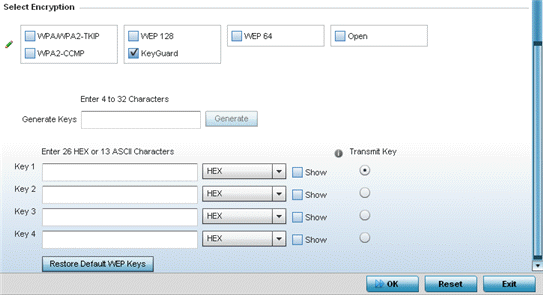Keyguard
About this task
Keyguard is a proprietary encryption method and an enhancement to WEP encryption, and was developed before the finalization of WPA-TKIP. The Keyguard encryption implementation is based on the IEEE Wi-Fi standard, 802.11i.
To configure Keyguard encryption on a WLAN:
Procedure
What to do next
- WiNG proprietary authentication techniques can also be enabled on WLANs supporting other WiNG proprietary techniques, such as keyguard.
- A WLAN using keyguard to support legacy devices should largely limit its use of keyguard to those legacy devices only.
- If WEP support is needed for WLAN legacy device support, 802.1X EAP authentication should be also configured in order for the WLAN to provide authentication and dynamic key derivation and rotation.




